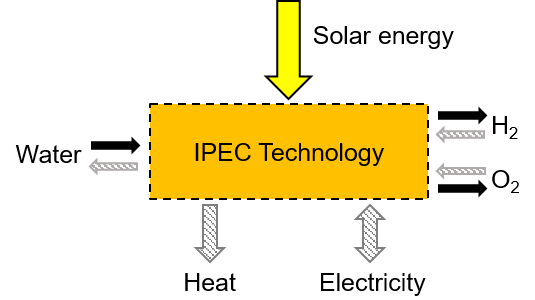Regenerative solar co-generation system

Key challenges for solar fuel technologies to become viable and widely deployed are their durability and cost. These challenges directly relate to the semiconductor-electrolyte (SE) interface inherent to traditional photoelectrochemical (PEC) approaches and to the low energy density of solar radiation (~1000 W/m2) and its stochastic and cyclic nature, requiring large processing areas with idle waiting time (i.e. low capacity factors). Solutions to these challenges include i) the utilization of concentrated radiation enabling larger production rates and smaller device area and mass, ii) the development of a co-generation approach (fuel, electricity, heat) to maximize efficiency and utility, iii) the thermal and electronic integration to increase durability and enhance the utilization of the solar spectrum (i.e. efficiency), iv) the development of a device design without the unstable SE interface, and v) the development of a versatile design approach to increase the capacity factor (e.g. by utilizing grid electricity or operating in reversible –i.e. fuel cell– mode during night time). The advantage to increase the multi-functionality, energy density and efficiency of a solar device is that it will become more appealing for applications particularly relying on compact, lightweight and high energy & power density components (e.g. space). Here, we propose to address the durability and economic challenges by the technological development of a regenerative integrated PEC co-generation device operating with concentrated solar radiation, whose feasibility we recently demonstrated. To make this approach relevant for large-scale deployment, high efficiency at high generation rates has to be demonstrated, requiring to understand and overcome mass transport limitation in the device, to design a device that maximizes performance in forward as well as reverse mode, to mitigate durability issues, and to incorporate matching high-performing photoabsorber and electrocatayst.
